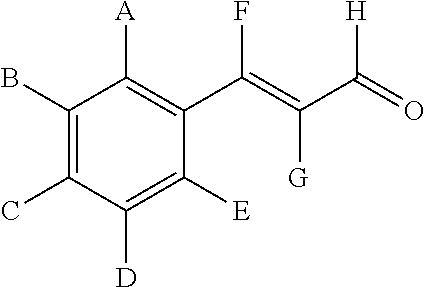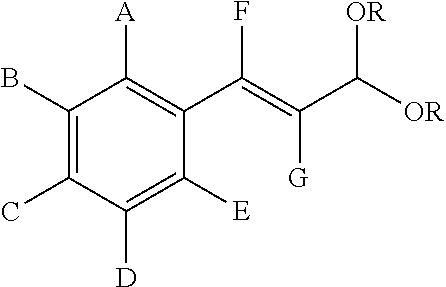Process for preventing or mitigating biofouling
a biofouling and process technology, applied in the direction of sealing/packing, phosphorous compound active ingredients, borehole/well accessories, etc., can solve the problems of biofouling being a substantial problem, biofouling being subject to heavy biofouling, and negative economic consequences of the process utilizing, so as to prevent or mitigate biofouling
- Summary
- Abstract
- Description
- Claims
- Application Information
AI Technical Summary
Benefits of technology
Problems solved by technology
Method used
Image
Examples
example 1
[0054]Water samples containing biofouling bacteria, in this particular case, sulfate-reducing bacteria (SRB), were used to test for synergism of cinnamaldehyde with tetrakis hydroxymethyl phosphonium sulfate (THPS). The samples were treated with different concentrations of THPS in combination with different concentrations of cinnamaldehyde and incubated for 3 hours. Following the treatment, an aliquot of each sample was serially diluted (10-fold dilutions) into culture media for SRB to enumerate the survivors according to NACE TMO 194-2004. The results are presented in Table 1 below:
TABLE 1THPSCinnamaldehydeSRB1 SurvivingConcentrationConcentrationTreatment(ppm)(ppm)(SRB / ml)00≧1010500≧10101000≧10102500 105025≧10105025≧101010025≧101025025 104050≧10105050≧101010050 10525050 1021SRB refers to sulfate-reducing bacteria
[0055]This test clearly shows that even at very low concentrations, cinnamaldehyde improves the ability of THPS to inhibit the growth of sulfate reducing bacteria.
example 2
[0056]A sample of a bacterial fouled water was taken from an oil production site and used as a culture base for testing of cinnamaldehyde as a bactericide. The culture was introduced into a synthetic brine (similar to that used for oilfield operations) and turbidity was measure at 600 nm after 24 hours. The results are shown below in Table 2.
TABLE 2Cinnamaldehyde Concentration(ppm)Turbidity02.098501.8541250.9732500.1753750.1035000.113
PUM
 Login to View More
Login to View More Abstract
Description
Claims
Application Information
 Login to View More
Login to View More - R&D
- Intellectual Property
- Life Sciences
- Materials
- Tech Scout
- Unparalleled Data Quality
- Higher Quality Content
- 60% Fewer Hallucinations
Browse by: Latest US Patents, China's latest patents, Technical Efficacy Thesaurus, Application Domain, Technology Topic, Popular Technical Reports.
© 2025 PatSnap. All rights reserved.Legal|Privacy policy|Modern Slavery Act Transparency Statement|Sitemap|About US| Contact US: help@patsnap.com



